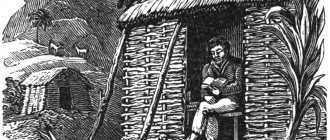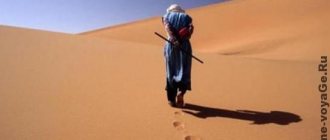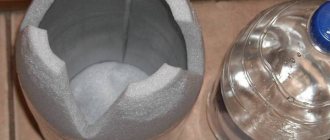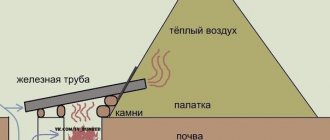Traveling in the desert
Water is the main factor for survival in the desert. Carry it with you as much as you can, even if you have to leave something else behind. If you decide to move:
- move only in the evening, at night or early in the morning; - go along the coast, to a known route, to a water source or to a populated area. Sweating can be reduced by wetting your clothes.
- choose the easiest route possible, avoiding quick sand, difficult terrain, paths along road tracks.
In sand dunes, walk on the hard sand in the valley between the dunes or along the ridges of the dunes:
- Avoid following streams to access the sea, except in coastal deserts or in areas where large rivers cross them. In most deserts, valleys lead to an enclosed body of water or temporary lake;
- Dress appropriately to protect yourself from direct sunlight and excessive sweating. If you don't have sunglasses, make yourself glasses with slits. Clothing is necessary in the desert to keep warm, since cold nights are very common there;
- watch your feet. Boots are the best footwear for walking in the desert. Only cross the dunes barefoot in cool weather, otherwise the sand will burn your feet. Follow caravan tracks to avoid quicksand or rocky areas;
— check the map if possible. Maps of desert areas are usually imprecise;
- find shelter during sandstorms. Do not attempt to travel in poor visibility. Mark the direction by drawing deep arrows on the ground, laying them out with stones or whatever is at hand. Lie on your side with your back to the wind and lie there until the end of the storm. Cover your face with a cloth. Don't be afraid of being buried under sand. Even in dune areas, it takes years to bury a dead camel.
If possible, find shelter on the leeward side of the hill;
- multiply distance calculations by 3, since the lack of landmarks often leads to incorrect calculations;
- In summer, mirages can often appear when you are facing the sun, although it is difficult to generalize under what conditions they appear and what forms they take.
Desert Shelter
Shelter from the sun, heat and possible sandstorms is essential to survival in the desert. Since there is basically no material for constructing a shelter, use the following methods.
1. Provide yourself with some protection from the sun by covering your body with sand. Burying in sand also reduces moisture loss. 2. If you have a parachute or other suitable material, dig a hole and cover its edges. In rocky deserts or deserts where there are bushes, thorns or mounds of tall grass, throw a parachute or blanket over the rocks or bushes. 3. To create shade or shelter, use both natural and man-made features of the terrain - a tree, a rock, a pile of stones or a cave. The wall of a dry riverbed can provide shelter, but if clouds roll in, your shelter may suddenly become flooded. Banks along dry river beds, valleys and ravines are especially good places to find caves. 4. If possible, use native shelters.
Orientation using natural landmarks
You can navigate by the rocks, as the winds constantly blow in the desert. Furrows with sharp ridges form in the rocks. Knowing where the wind blows in the area in which the tourist is located, you can determine the cardinal directions.
If a traveler stops for a rest, then he must lay out the direction of the cardinal points on the sand. You also need to focus on the macaques, which indicate the location of oases or wells.
This is interesting: Night vision devices for hunting - history, design, application and selection rules
The remains of animals and fires will also help you navigate in the desert.
Artificial landmarks in the desert
Orientation in the desert using artificial landmarks
Mazars will help you find and determine the location; these are graves; they are installed on a hill, relative to the cardinal points. Knowing exactly how they are installed, the tourist will quickly determine the cardinal directions.
Suburgans are installed on roads to carry out Buddhist rituals.
Obo - stone piles, are located at the intersections of roads and paths on a hill, so they are visible over long distances.
Oyuki are hills or piles in the shape of a pyramid, which mean that there is a well nearby.
Using water in the desert
General provisions. The importance of water cannot be overstated. It is significant no matter how well your food supplies are selected.
In hot deserts, at least 3.5 liters per day is needed. If sweating is moderate and movement in the desert occurs on a cold night, this reserve will be enough for 30 km of travel. In the heat of the day you can only walk 15 km.
Save water. 1) Stay dressed at all times. Clothing helps control sweating and prevents sweat from evaporating as quickly, causing it to lose its cooling properties. You will feel cooler without a shirt, but you will sweat more and may also get sunburned. 2) Don't rush. By using less water and sweating less, you will last longer. 3) Do not use water for washing until you have a reliable source of it. 4) Do not swallow water in one gulp. Drink it in small sips. If you're running low on water, use it only to wet your lips. 5) As a means of relieving heat, keep small pebbles in your mouth or chew grass. You can reduce water loss by breathing through your nose. Do not speak. 6) Use salt only with water and only if there is enough water. Salt increases thirst. 7) Limiting water consumption to 1-2 liters per day leads to disaster (at high temperatures), since such an amount of water does not prevent dehydration. In such cases, limit sweating rather than water.
Local wells. A minimum of four quarts of water per day may be difficult to find unless there is a well or oasis nearby. Since wells are the main source of water in the desert, the best way to find them is by driving along a local road. There are other ways to find water in the desert.
Be guided by the following:
1) Along sandy shores or desert lakes, dig a hole in the first hole behind the first sand dune.

Incredible cases of human survival in the desert
One of the most striking examples of miraculous survival is the case of Mauro Prosperi. Back in 1994, he took part in the event “Marathon on the Sands”. The program assumed that all participants would run 250 kilometers in 6 days along the sands of the Sahara. However, not everyone managed to reach the finish line, in particular Mauro, who was 39 years old at that time, got lost and spent 10 days in the desert.

And it all happened on the 4th day of the marathon, when a sandstorm began and lasted 8 hours. As Mauro says, when the storm ended, it was already evening, dark, and he went to bed. In the morning, when he woke up, the marathon runner did not completely recognize the surrounding area. After 4 hours of running, Mauro realized that he was lost and there was no one in the area. According to the marathon runner, he drank the blood of bats, his own urine, and ate mice, lizards and snakes. As a result, he saw the settlement and was saved.
There are still many people who survived in the desert. In 2001, Ricky Megae woke up in the Australian desert with no idea how he got there. Then Ricky walked for about 9 days through the desert and came to a dam, where he pitched a hut made of branches. He lived in this shelter for about 3 months, ate grasshoppers and leeches, and was eventually found and rescued by local farmers. After such a strange journey, Megi wrote an adventure book.
Where to find food and food in the desert
It's hard to find food in the desert. But it still ranks second in importance compared to water. And you can do without it for several days without any health consequences. Distribute the food from the beginning. Do not eat anything for the first 24 hours and do not eat until you have no water.
Natural springs.
1) Animals are rarely seen in the desert. Rats and lizards can be found near water sources and may be your only food. Even-toed ungulates can be found in the desert, but they are difficult to approach. The most common animals are rodents (rats), rabbits, jackals, snakes and lizards, which are usually found near bushes or water. Look for sand snails on rocks and bushes. 2) Some birds can also be found in the desert. Try kissing the back of your hand while making a suction sound to attract them. Sand grouse, bustards, pelicans and even gulls have been spotted on some desert lakes. Use traps or a hook and try hard to catch them. 3) Usually, where there is water, there are plants. Many desert plants look dried out and unappetizing. Look for the soft part on them that is edible. Try all the soft parts growing on the surface of the earth - flowers, fruits, seeds, young shoots and bark. At some times of the year you can find grass seeds or pods. These pods grow on acacia trees, which are often thorny and similar to the mosquito tree or cat claw found in the southwestern United States. The prickly pear (a type of cactus) is native to North and South America and is often found in North Africa, the Middle East and the Australian deserts. 4) All grass is edible, but some of its species, growing in the Sahara or Gobi, are tasteless and non-nutritious. Try any plant you find, it's not lethal. Dates may be found in northern Africa, southwest Asia and parts of India and China.
Native food.
1) The food of the natives in the Sahara is both tasty and nutritious. In the Gobi, the Mongols are not very careful about cleanliness, so the food is unhygienic. Take advantage of the natural hospitality of the natives, do not steal food. 2) The daily food of the natives is extremely dangerous, as are the fruits and other prepared foods offered by the natives. If possible, barter or buy raw food and cook it yourself.
Desert Food Recipes
In unusual, hot conditions, the human body behaves differently than usual. For example, metabolism changes. Protein tissue begins to break down very quickly, because the abundance of protein can lead to an increase in the metabolic rate, which will lead to overheating of the body, which is extremely undesirable in a hot desert climate.
At desert temperatures, fatty foods are disgusting and difficult to digest, but they help the body retain water. For example, a camel. Thanks to the fat reserves in the hump, it can remain without water for a long time. Unfortunately, foods high in protein and fat make you thirsty, so a diet high in carbohydrates is preferable. However, in an emergency situation, all edible flora and fauna can provide food.
The most common food items are small mammals and amphibians. For example, hedgehogs, jerboas, lizards, snakes, frogs, turtles. Insects are also suitable for food. The most valuable are locusts.
If there is vegetation in the desert, you can take advantage of it. Sorrel, roots of katran, goosefoot, and berries of shrubs can be eaten. In addition, if it has recently rained, many flowers may grow and these can also become part of the diet. As well as numerous mushrooms, very similar to champignons. Desert inhabitants widely use camel thorn decoction. It perfectly quenches thirst, helps stabilize the condition of the stomach and intestines, refreshes and gives strength.
Conventionally, deserts are divided into the Old and New Worlds. The latter are richer in vegetation, which can be used for food. For example, cacti. Most of them can be eaten. They are boiled, made into tinctures, eaten raw... the pulp of the cactus fruit consists of only four hundredths flesh. Everything else is liquid. They are called tunas, prickly pears, and Indian figs. Even alcohol is made from these evergreens. The most famous is tequila.
The Katangur plant is found in Central Asian deserts. usually grows on the slopes of outlier hills. The height of the katangura reaches almost half a meter; at approximately the same depth you can find a nutritious root. It needs to be boiled before use.
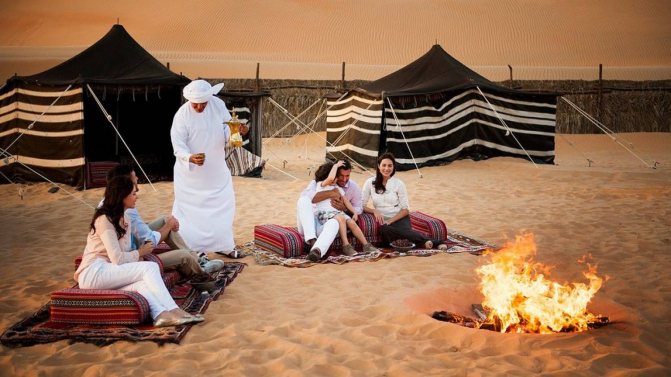
Crushed dry twigs of a plant called abal can be used as tea, and its flowers can be consumed raw. The date palm is especially popular. Its fruits are very energy-intensive. They are dried, boiled, fried, and eaten without processing. The core of the trunk itself can also be eaten.
There are two types of onions that a traveler may encounter. One of them tastes bad and makes you thirsty. Desert inhabitants use it as a seasoning. But the second type of onion will delight you with its delicate and pleasant taste and size of the bulbs. They come in diameters of more than two inches.
Unfortunately, not all plants can help. There are also dangerous ones. They can be detected by examining the incision site. Milky white liquid will warn of danger.
Clothes for moving in the desert
Protect yourself from direct sunlight, excessive sweating, and the many irritating desert insects.
1) Cover your body and head well during the day. Wear long pants and a long sleeve shirt. 2) Wear a cloth around your neck that protects the back from the sun. 3) If any part of the clothing must be left behind to lighten the load, keep that part of the clothing that is necessary to protect against the cold of the night in the desert. 4) Wear loose clothing. 5) Only unbutton your clothes in thick shade. Reflected sunlight can cause sunburn.
Protecting your feet can be a matter of life and death. It is useful to know the following.
1) Avoid sand and insects getting into your shoes and socks, even if you need to stop frequently to clean your shoes. 2) If you don't have boots, make some kind of windings from any material you have on hand. To do this, cut two strips, each 3-4 inches wide and 4 feet long. Wrap them around your legs in a spiral, starting from the foot, from the bottom up to the shin. This will prevent you from getting sand. 3) Make a pair of sandals from the side of an old car tire if there are any cars nearby. However, it is better to reinforce the soles of your boots with durable material if worn soles are causing problems. 4) When relaxing in the shade, take off your shoes and socks. Do this carefully as your feet may become swollen and it can be very difficult to put your socks back on. 5) Don't try to walk barefoot. Sand can cause burns on your feet. In addition, walking barefoot on salty hard or swampy surfaces can lead to alkaline burns. 6) Make shoes with wooden soles to protect your feet while moving. Nail the strap to pieces of wood and tie it to your leg. Protect your upper legs from the sun.
Dehydration
General provisions. 1) In the desert heat, thirst alone is an inaccurate indicator of how much water you need. If you only consume enough water to quench your thirst, dehydration may still slowly progress. Drink more water whenever possible, especially during meals. If you drink water only with meals, you will tend to become dehydrated between meals, but will return to normal after eating and drinking water; however, you will often feel tired due to the loss of energy along with the loss of water. 2) Strength lost due to dehydration is quickly restored if you drink water. 3) Losing water does not cause any permanent complications, even if you lose up to 10 percent of your weight. At 70kg - 7kg can be lost through sweating, provided you drink enough water afterwards to replace it. Cold water causes stomach pain if swallowed quickly. 4) At 25 percent fluid loss, you can survive if the air temperature is 30 degrees or cooler. At temperatures of 32 degrees and above, a 15% loss of fluid is dangerous.
Signs of fluid loss. Thirst and general malaise appear first, followed by a desire to slow down any movement and loss of appetite. As you continue to lose water, you become drowsy. Your temperature rises and by the time you lose 5 percent of your weight, you begin to feel nauseous. When you lose 6-10 percent of your body weight, the symptoms will increase in the following order: dizziness, headache, difficulty breathing, trembling legs and arms, dry mouth, bluish discoloration of the body, difficulty speaking, loss of ability to walk.
How to prevent water loss. There is no substitute for water. Alcohol, salt water, and gasoline only increase dehydration. In emergency cases, it is possible to drink salt water (containing half the amount of salt present in sea water) and get a clean increase in body fluids. Any liquid containing a higher percentage of unusable elements can only disrupt the body's cooling system. Chewing gum or rocks in the mouth can be a pleasant way to delay the pangs of thirst, but they are not a substitute for water and do not help maintain normal body temperature.
